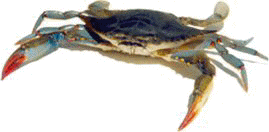From The Virginia Adventure Roanoke to James Towne: An Archaeological and Historical Odyssey by Ivor NoŽl Hume, Alfred A. Knopf, New York, 1994, page 386-388.
In 1619 the Company (WBW note: The Virginia Company) had sent out eight ships, between them carrying 650 people "sent for Publicke and other pious uses," among them 90 "Young maids to make wives for so many of the former Tenants." In June 1620, 100 more (plus a like number of servant boys) were being assembled. The quality of possibly earlier shipments would be questioned later, when the conduct of Sir Thomas Smytheís adminstration of the Company came under fire, charging (among many another accusation) that "He sent but few women thither & those corrupt." Defender Sir Nathaniel Rich answered that on the contrary, "He sent a great many & those of the best hee could gett & some such whose Husband since hath ben knighted & made Governor of Virg." [. . .], this a telling riposte, using Sir George Yeardley and his wife in evidence.
Regardless of Richís defense, complaints that previous shipments had been of uneven quality had almost certainly filtered back to London by 1621, prompting the Company in its next supply to insist that aboard the Marmaduke "Wee send youe in this Shipp on[e] Widdow and eleven Maids for Wives for the people in Virginia," each carefully screened and all accepted "uppon good Commendacons." They were not to be wasted on servants, said the Company, but were to be offered "only to such freemen or Tenn[an]ts as have meanes to manteine them." In September fifty more quality "maids & young woemen" were dispatched aboard the Tiger___ probably the same ship later used by Captain Spelman. With the cost of shipping taken into account, the women were to be priced to prospective husbands at not less than "one hundred and fiftie [pounds] of the best leafe tobacco," and proportionately more if any should die on the way over. They came, said the Company, with a packet of testimonies to "theire honest life and cariadge, wch together wth theire names we send here inclosed for the sattisfaccon of such as shall Marry them." Although the council in Virginia made no complaint about the quality of the shipments, it wrote back complaining that the maids had not been provided with food, and asking that the next lot "bringe same smale pvisione wth them to help them ... untill they may bee convenientlie disposed of."
Regardless of the exported womenís true moral character [. . .] and one cannot help wondering who of moral character and sound mind would have volunteered to go to the edge of the earth to be sold like breeding stock to men they didnít know [. . .] the popular English presumption was less than flattering. Thus a Londoner introduced to a woman who had come back from the colony turned to the by then aging but still - contentious John Martin and asked, "Is this one of your Virginia whoores?"
The Companyís rationale for shipping the women was sound enough, and it could hardly be blamed for the moral turpitude of a few. Indeed, a cynic might argue that, as in frontier towns of the American West, they served a useful function. Much more important was the Companyís recognition that if the colony was to be controlled and to prosper, its male inhabitants had to put down roots, and "wifes, children and familie might make them lesse moveable and settle them, together with their Posteritie in that Soile." It was true, and there can be no doubting that Virginiaís "maids," though looked upon as chattels, and often most cruelly treated (as was the pregnant seamstress who made a shirt too short and whose court - ordered whipping caused her child to miscarry), played a role no less important in cementing the colony than did the men. Tragic it is, therefore, that so few of their names survive.
As is so often true of major enterprises in their early phases, much more careful recording was maintained when the numbers were small, manageable, and pioneering. Thus we know the names of most of the people who went as Raleghís settlers to Roanoke Island as well as those who landed on Jamestown Island in 1607 and those who followed in the 1608 supply. But once exporting working people became old hat, numbers were of more lasting concern than names: so many on this and so many more on that. Itís true that we have lists of the dead in the 1622 massacre, a tabulation of those who survived in 1624 and those who didnít, and the magnum muster of 1625; but between 1608 and 1622 we have only the occasional name ___ most often those lucky enough to survive to be listed in the muster, which usually noted the year of arrival and the name of the ship that brought them.
Even when the lesser names survive, learning whence they came and what they contributed is rarely possible. Across four centuries, when many people had the same names and when any one of them would be spelled in whatever way the scribe cared to write it, being sure that you had the right John Smith (unless, of course, he was the John Smith) is defiantly difficult. On the other hand, like the cast of any memorable drama, the biographies of the stars are a matter of record, but nobody remembers who played the maid [. . .] unless, like Elizabeth Abbott, she happened to be whipped almost to death with fishooks.
Return to the index for this article
Return to the GHOTES main page
 >>> Advertise Here <<<
>>> Advertise Here <<<